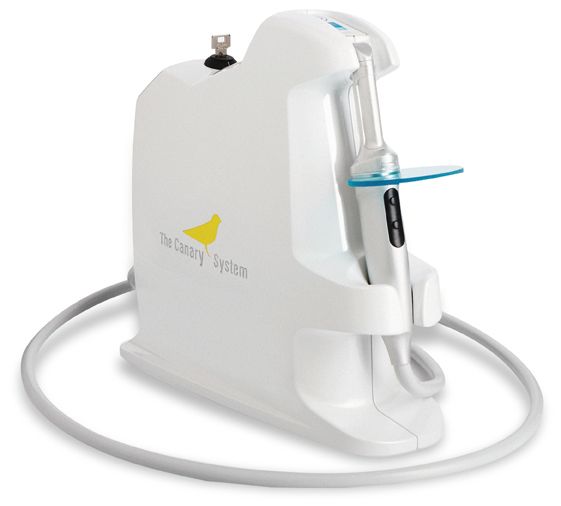Q&A: Dr. Richard H. Nagelberg talks up caries detection devices, as well as the Canary System's features, benefits and ROI
As part of DPR's June coverage of caries detection devices in our print publication, Products Editor Michael Quirk caught up with Dr. Richard Nagelberg, DDS, a family dentist who practices out of Plymouth Meeting, Penn. to learn why he relies on the Canary System to help ensure the health of his patients.
As part of DPR's June coverage of caries detection devices in our print publication, Products Editor Michael Quirk caught up with Dr. Richard Nagelberg, DDS, a family dentist who practices out of Plymouth Meeting, Penn. to learn why he relies on the Canary System to help ensure the health of his patients.
Q: What is the most frequent question you hear about the caries detection category, and how does The Canary System answer that question? The most frequent question I hear regarding caries detection devices is their accuracy and reliability. The Canary System has proven to be completely reliable and accurate in terms of revealing caries that are difficult to detect visually or radiographically. In some cases it confirms a suspicion of caries and in others it is the only means of diagnosing caries, including lesions adjacent to an existing restoration and interproximally. Q: What about these devices, and The Canary System in particular, help dentists practice better dentistry? The Canary System enhances the level of care that can be provided by revealing caries that may otherwise be undetected. It is not uncommon to discover large carious lesions in the dentin that were not evident clinically or radiographically. Any device that allows for early detection of a lesion benefits the patient. Patients respond very positively to the Canary System, understanding that an undetected lesion may progress, necessitating more involved, time-consuming and potentially more costly treatment. Q: What can dental practitioners do to get the most from these devices, perhaps in terms of ROI? Optimizing the benefit of caries detection devices involves maximizing utilization. In addition to detecting carious lesions that would otherwise escape detection and progress, practices will experience an increase in the placement of sealants. Teeth that are below threshold for caries as determined by the Canary System are candidates for sealants. Patients also respond positively to suggestions to place sealants due to their non-invasive, preventive properties. Detecting interproximal caries and lesions at the margins of existing restorations also helps maximize the benefit and ROI of the Canary System. Q: What are some upcoming trends for caries detection devices you see in the U.S.? Upcoming trends in caries detection devices will likely include increased capabilities of existing devices. Other means of caries detection we may see in the future include salivary diagnostic technology for cariogenic bacterial identification, salivary biomarkers, salivary pH evaluation and other genetic technologies.
The Canary System

The Canary System is a low-powered laser that allows for early detection of caries and defects in the tooth’s crystal structure not yet discernible on X-rays or by visual examination. It can detect decay on smooth enamel surfaces, root surfaces, occlusal surfaces, proximal surfaces, under sealants, and around existing amalgam or composite fillings. The Canary System can detect lesions as small as 50 microns up to 5 mm below the tooth surface; it can also detect cracks in enamel. A Canary exam provides audible and visual numeric measurements of tooth structure that engages the patient and helps them to understand the rationale for a proposed treatment plan. More than 60 papers published in peer-reviewed journals demonstrate Canary’s ability to detect and monitor carious lesions and cracks in teeth. For more information about the Canary System, call Quantum Dental Technologies at 1-866-933-9910 or head to
www.thecanarysystem.com.
ACTIVA BioACTIVE Bulk Flow Marks Pulpdent’s First Major Product Release in 4 Years
December 12th 2024Next-generation bulk-fill dental restorative raises the standard of care for bulk-fill procedures by providing natural remineralization support, while also overcoming current bulk-fill limitations.
